Banned decades ago, PCBs still posing threat to wildlife
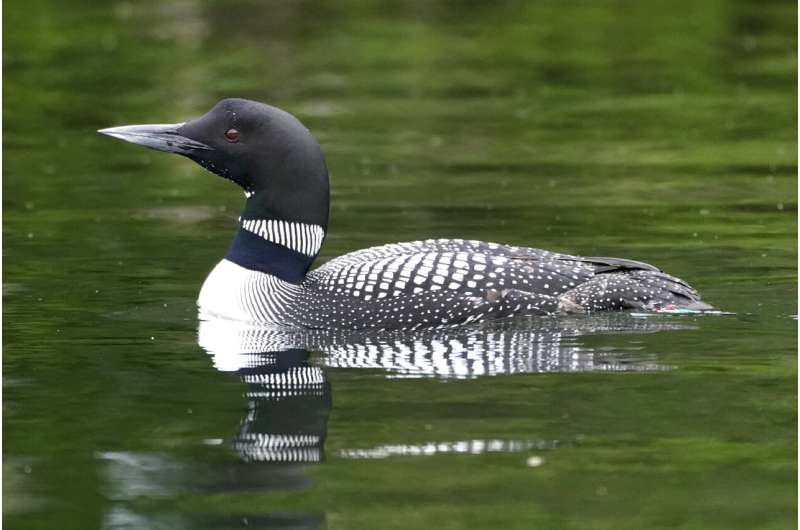
Navigating her boat toward a wooden platform floating in an idyllic New Hampshire lake where "On Golden Pond" was filmed, biologist Tiffany Grade spotted what she had feared.
An olive brown loon's egg with black speckles was sitting on an nest, abandoned by its parents and with no chance to hatch. Gently scooping it up with gloved hands, Grade placed the egg in a zip lock bag and packed it into a cooler.
The egg was sent to a lab in Canada to test for chemicals including Polychlorinated biphenyls, or PCBs, that have been found in other Squam Lake loon eggs, the fish there and a tributary of the lake.
Grade is investigating the potential link between PCBs and population declines of the fish-eating birds known for their sharp beaks, black and white speckled backs, iridescent greenish heads and haunting calls.
"These are chemical contaminants," said Grade, who works for the Loon Preservation Committee in New Hampshire. "We don't know what the effects are but some of those eggs are at levels that have exceeded (those) known to cause health and reproductive problems in other bird species ... That is enough to make us worried and dig into it more."
The presence of PCBs on a lake in the shadow of the White Mountains demonstrates how these heat-resistant chemicals once used widely in electrical equipment and other industrial applications continue to pose a threat to wildlife more than four decades after being banned in the United States.
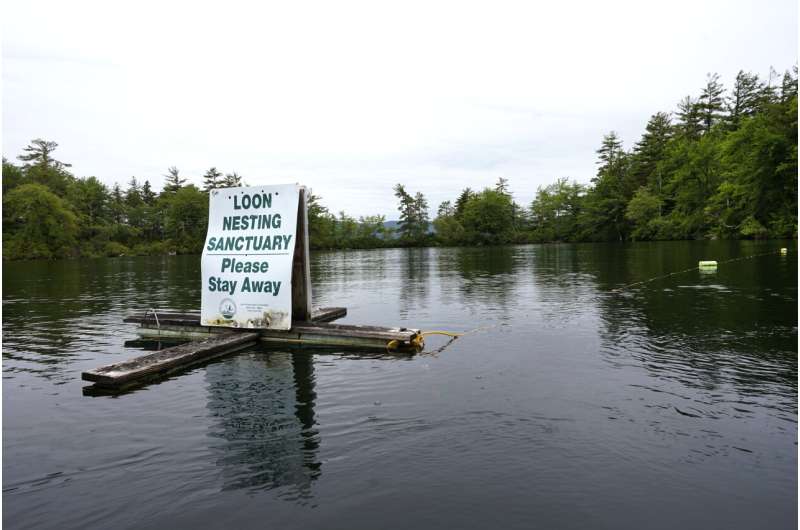
PCBs, a class of more than 200 chemicals used for almost 50 years, have been found in wildlife around the world, such as Icelandic killer whales, shorebirds along the Great Lakes and bottlenose dolphins along the East Coast and in the Mediterranean. Scientists have found they can make some animals more vulnerable to diseases including cancer and can disrupt growth, energy production and reproduction.
"There is five decades of research showing that PCBs have had health impacts on both wildlife and humans," said Keith Grasman, a biology professor at Calvin University in Michigan who has studied pollutant impacts on birds in the Great Lakes and other places. "While their concentrations in the environment have declined in many situations ... we still see issues with these legacy compounds."
In New York, researchers found chickadees and song sparrows that ate insects contaminated with PCBs along the Hudson River sounded a bit different than ones in uncontaminated areas in the Adirondacks. Cornell University researchers believe the PCBs interfere with development in part of the bird's brain responsible for song and could have consequences for breeding.
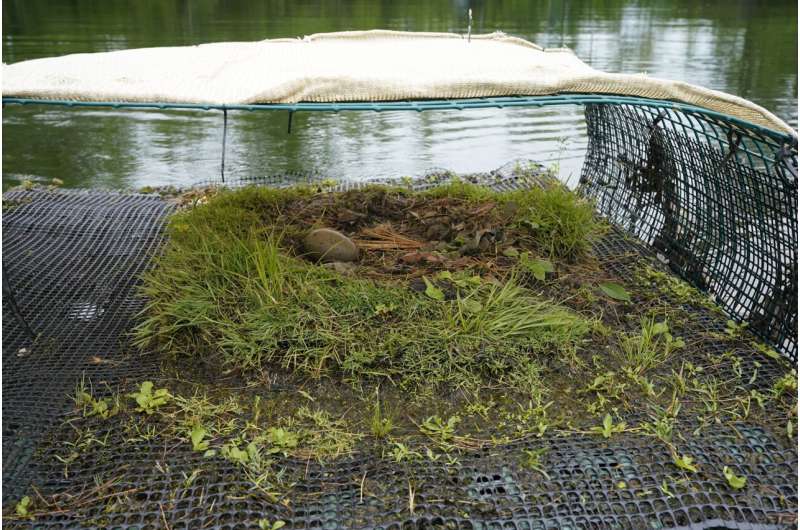
PCBs continue to move up the food chain, with animals at the top often harboring the highest concentrations.
The Marine Mammal Center responds to 800 stranded marine mammals yearly along 600 miles (965 kilometers) of California coast. A 2020 study of stranded adult sea lions concluded that PCBs and DDT, which also was banned decades ago, are contributing to cancer rates as high as 23%.
"That rate of cancer is mostly unprecedented in wildlife," said Cara Field, medical director of the center, adding that the disease caused a "complete systemic breakdown" in the animals and their blubber had much higher levels of PCBs than those without cancer.
Fish-eating birds, too, have suffered from exposure to PCBs.
In recent decades, studies at a Superfund site in Massachusetts, on islands in the New York harbor and at contaminated sites in the Great Lakes found significant levels of PCBs in common terns, endangered Roseate terns, Caspian terns, herring gulls and double-crested cormorants. Scientists found that PCBs, sometimes combined with other chemicals, suppressed the birds' immune system, increased infertility and reduced chick survival compared to unpolluted sites.
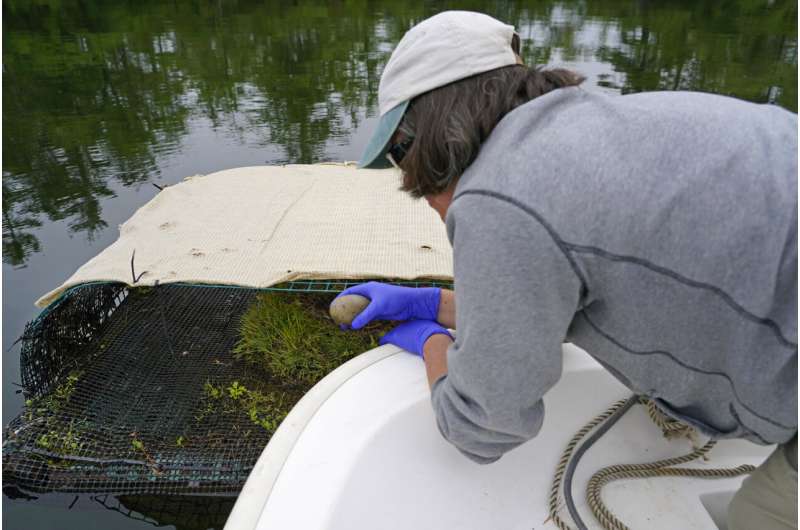
At Squam Lake—site for the 1981 movie starring Henry Fonda and Katharine Hepburn and now a tourist destination—Grade and colleagues at the Loon Preservation Committee, which has been working since 1975 to protect New Hampshire's loons, want to know why they are producing so few chicks.
The population crashed between 2004 and 2005—from 16 pairs to nine—and has been slow to recover. This year, there were only 14 pairs recorded on the lake, c ompared to 312 in other parts of the state. Only three chicks survived—still less than half the productivity of other New Hampshire lakes.
The committee, which began testing Squam Lake eggs in 2007, found PCBs and other contaminants were up to six times higher than eggs tested elsewhere in New Hampshire, Maine and New York. The nonprofit also found PCBs in a tributary emptying into the lake and in their crayfish, which led to a theory that PCB-laced oil used to control dust on dirt roads decades ago may have reached the waterways.
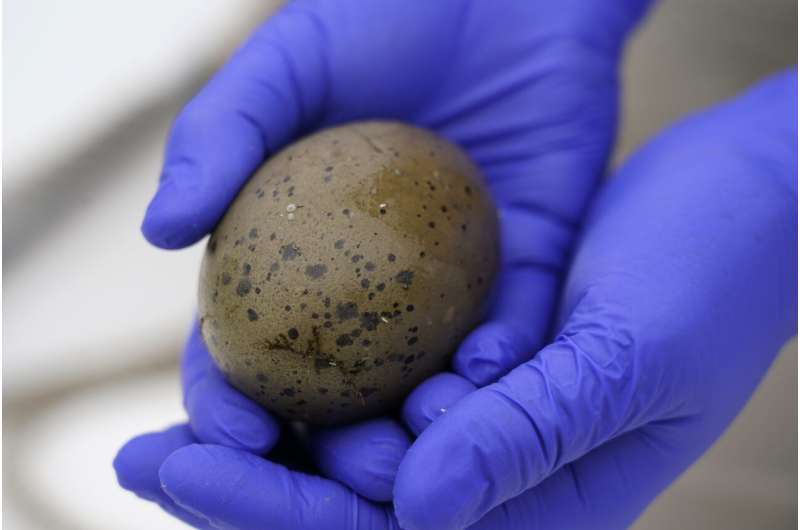
The loon egg contamination prompted the state to test the lake's smallmouth bass and yellow perch. And high PCBs levels led to a 2020 health advisory limiting the amounts of fish eaten by anglers.
"We would not have suspected that Squam Lake would have been a place in which this was a problem," said Ted Diers, administrator of the state's Watershed Management Bureau. "There is no industry. It just opens up lots of questions that we truly can't answer at this point."
Loons, a threatened species in New Hampshire, face myriad challenges.
Shore-prowling predators such as raccoons raid their nests. Territorial disputes kill the birds. Ingesting lead fishing tackle poisons them. Their nest sites lose out to development. And a warming climate can overheat loons and flood their nests.
Researchers have also found PFAS fire retardants, the pesticide chlordane and other chemicals in loon eggs. But PCBs were in the greatest concentrations, although Grade says more work's needed to assess what's causing the bird's poor reproductive outcomes.
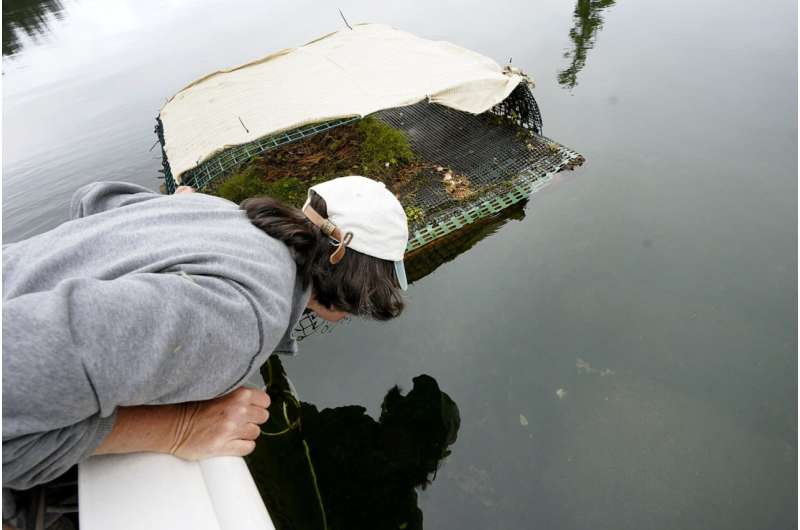
"Contaminants aren't the only thing these loons are dealing with. They are dealing with a lot," she said. "That is not easy to separate. It is a lot easier if you are sitting a bird down in the lab and dosing it with contaminants and seeing what happens. That obviously is not what we are doing."
Anne Kuhn, a U.S. Environmental Protection Agency scientist who has researched contaminants in wildlife, agreed it could be a challenge to tease out the impact of PCBs on Squam Lake loons.
Her own work found that mercury, often from coal-fired power plants, combined with shoreline development and human activities in New Hampshire lakes, were hurting loon populations. But mercury alone was not.
Similarly, said EPA research biologist Diane Nacci, it could be that PCBs and other chemicals working together are causing the problem
-
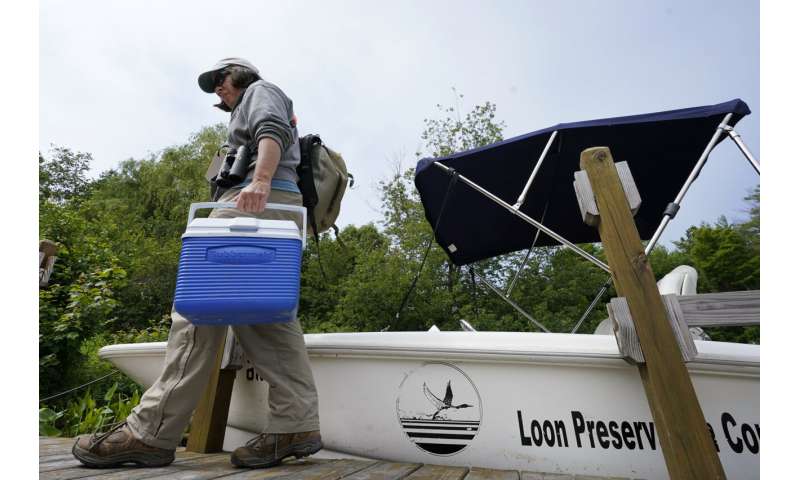
Biologist Tiffany Grade carries a cooler containing a non-viable loon egg collected from Squam Lake, Friday, June 25, 2021, in Holderness, N.H. Grade is studying the impact PCB's are having on loons, and will examine the egg for possible PCB contamination. Researchers in New Hampshire have long struggled to understand why loon numbers have stagnated on the lake, despite a robust effort to protect them. Credit: AP Photo/Elise Amendola -
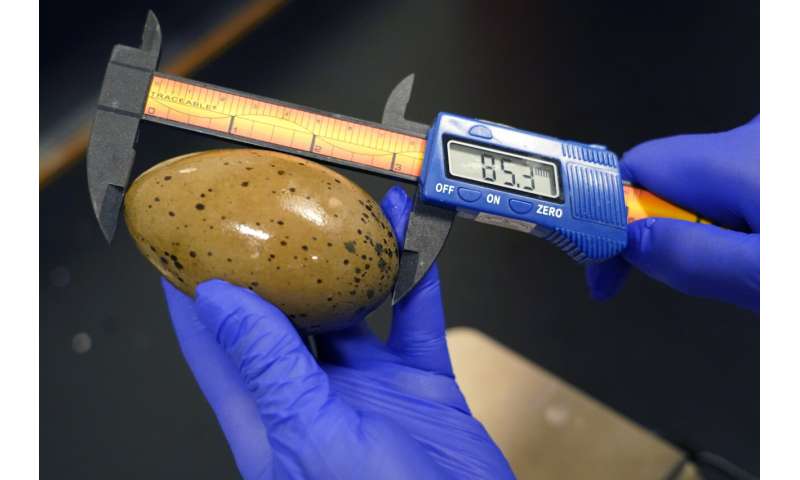
Biologist Tiffany Grade measures a non-viable loon egg collected from Squam Lake, Friday, June 25, 2021, in Holderness, N.H. Grade is studying the impact PCB's are having on loons, and will examine the egg for possible PCB contamination. Researchers in New Hampshire have long struggled to understand why loon numbers have stagnated on the lake, despite a robust effort to protect them. Credit: AP Photo/Elise Amendola -
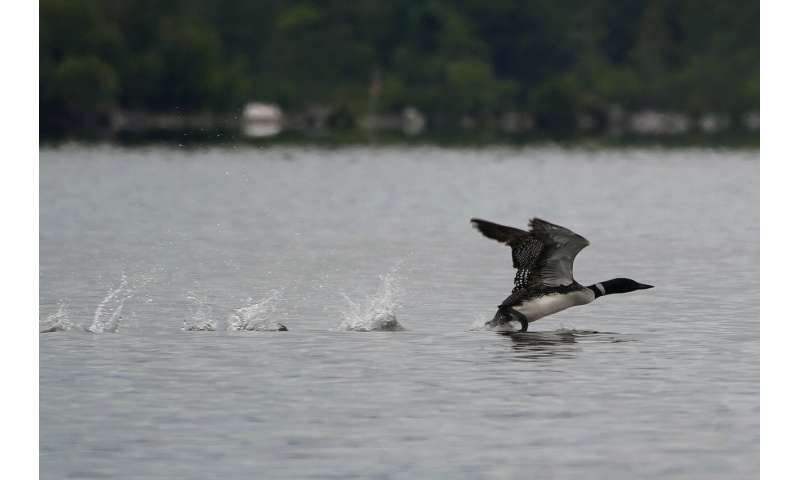
A loon takes flight on Squam Lake, Friday, June 25, 2021, in Holderness, N.H. Researchers in New Hampshire have long struggled to understand why loon numbers have stagnated on the lake, despite a robust effort to protect them. They are investigating whether contamination from PCBs could be the culprit and believe oil laced with the chemicals was used on nearby dirt roads decades ago. Credit: AP Photo/Elise Amendola -
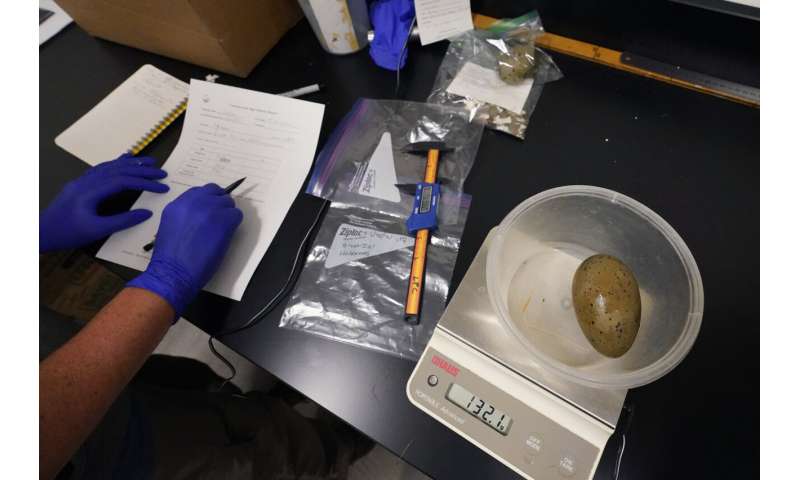
Biologist Tiffany Grade writes notes as she examines a non-viable loon egg collected from Squam Lake, Friday, June 25, 2021, in Holderness, N.H. Grade is studying the impact that PCB's are having on loons, and will test the egg for possible PCB contamination. Researchers in New Hampshire have long struggled to understand why loon numbers on the lake have stagnated, despite a robust effort to protect them. Credit: AP Photo/Elise Amendola
"Any one stressor might not be enough to affect reproduction in loons but together that might be the straw that broke the camel's back," Nacci said.
For now, Grade collects abandoned eggs on Squam and other New Hampshire lakes and tests them for contaminants, searching for elusive answers that could help the loons survive. "They are an absolutely charismatic birds," she said. "It's hard to imagine any New Hampshire lake without loons."
© 2021 The Associated Press. All rights reserved. This material may not be published, broadcast, rewritten or redistributed without permission.
















